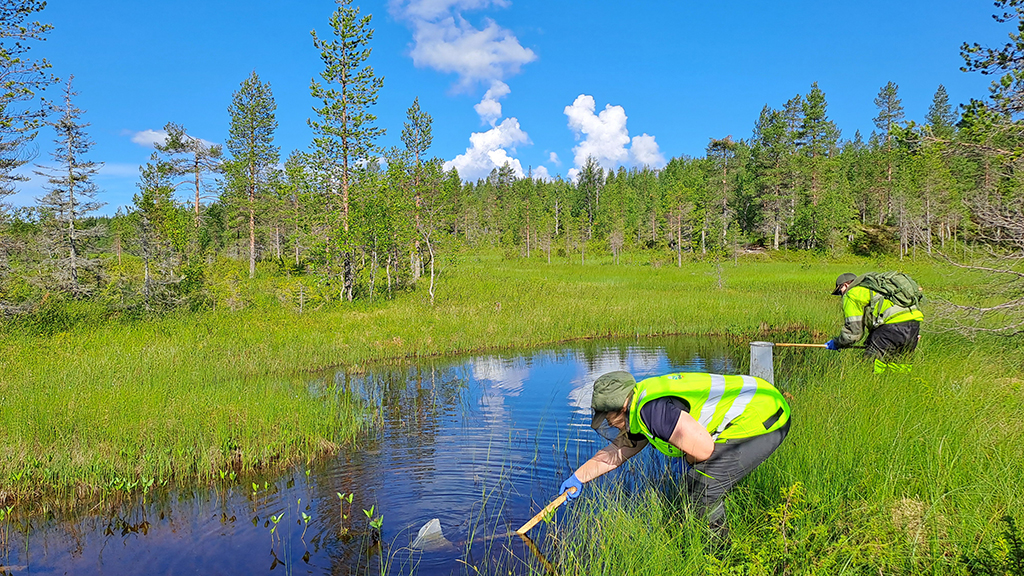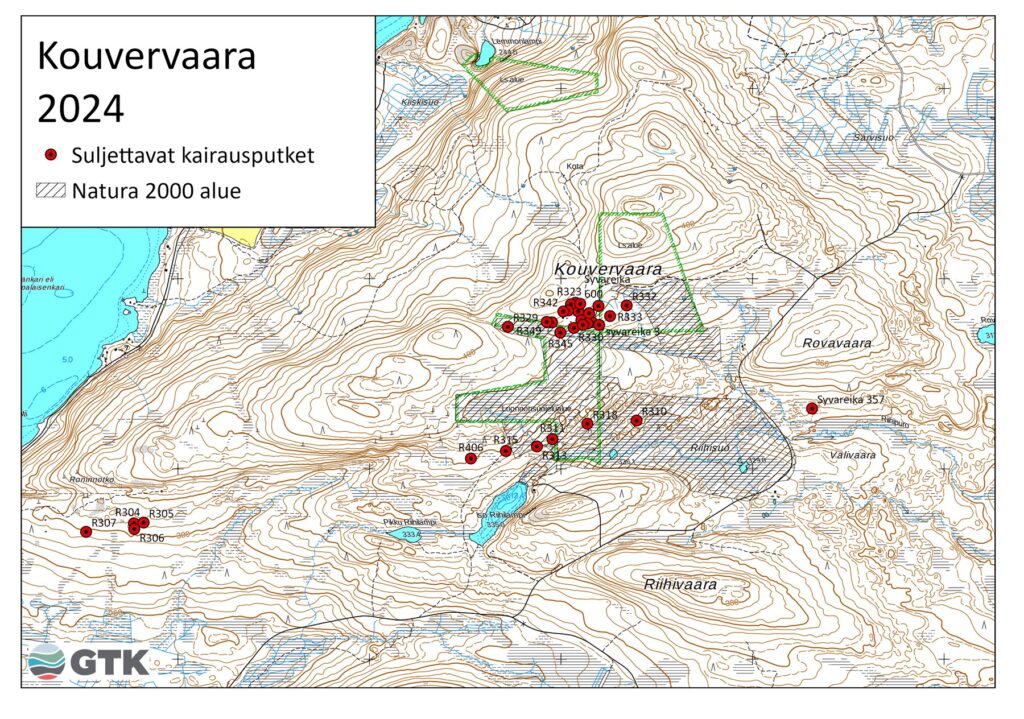Studies on the Kouvervaara Drill Pipes in Kuusamo Completed – Pipes to Be Permanently Sealed
The Geological Survey of Finland GTK has completed further studies on old drill pipes that discharge groundwater into the environment in Kouvervaara, Kuusamo. Elevated radon activity and metal concentrations were observed in water in the drill pipes. Higher metal concentrations and radionuclide activity were also found in stream sediments near the drill pipes. According to the studies, harmful substances have not spread far in the vicinity. All drill pipes that discharge groundwater will be permanently sealed, and measures in the area will continue until 2027.

GTK performed exploration drillings related to uranium and gold-cobalt ore in Kouvervaara, Kuusamo in the 1970s and 1980s. At the time, drill pipes were left above the ground for later studies, some of which discharge groundwater in their vicinity. In 2023, the North Ostrobothnia Centre for Economic Development, Transport and the Environment (ELY Centre) issued an administrative compulsory decision on surveying the status and need for remedying stream sediments downstream from the drill pipes.
GTK has been studying the location of the drill pipes and the quality of discharged groundwater since 2019, as well as the quality of stream waters and sediments downstream from the drill pipes.
Elevated concentrations in the vicinity of drill pipes
A total of 83 sites were found in a survey, of which 63 had above-ground drill pipes. Of these, 27 discharge groundwater. Water samples were taken from a total of 30 locations in drill pipes, springs and streams. Additionally, stream sediment samples were taken from 27 locations in stream bottom sediments from springs and downstream from drill pipes.
Elevated levels of uranium, radon, radio lead, arsenic and cobalt were found in water samples in some places. The uranium concentrations in one drill pipe sample were above the quality limit for domestic water. Radon concentrations were above the quality recommendations in several samples, but radon evaporates rapidly when water is discharged above the ground.
Based on sediment samples from stream water, higher concentrations of harmful substances are limited to the vicinity of drill pipes. Harmful substances were not detected in a wider area in the vicinity. Elevated concentrations are also natural for the area. Elevated concentrations of metals and radionuclides were found in sediment samples from springs and streams with natural background concentrations.
Drill pipes discharging groundwater to be permanently sealed
Based on the studies, harmful substances occur in a small area in the vicinity of drill pipes. Extensive remediation of stream sediments could harm protected natural habitat types. This is why the primary measure will be to permanently seal all drill pipes that discharge groundwater with fast-setting concrete during 2026–2027. The remaining above-ground drill pipes will be cut off and landscaped.
GTK has implemented and reported on all measures required by the administrative compulsory decision of the ELY Centre for North Ostrobothnia. According to the ELY Centre for North Ostrobothnia, the studies have been comprehensive and mainly sufficient.
Supplements to the GTK’s sediment report will be completed by the end of October 2025, and the ELY Centre for North Ostrobothnia will prepare a new control letter by the end of the year. The need for remedying stream sediments locally will be assessed in the updated report and the control letter.

Further information
Tiina Kaipainen, Geologist
Geological Survey of Finland GTK
tiina.kaipainen@gtk.fi
Päivi Kauppila, Chief Expert
Geological Survey of Finland GTK
paivi.kauppila@gtk.fi
Antti Petänen, Head of Unit
ELY Centre for North Ostrobothnia
antti.petanen@ely-keskus.fi
Elisa Kyllönen, Senior Inspector
ELY Centre for North Ostrobothnia
elisa.kyllonen@ely-keskus.fi
You can view and download the 2024 research reports in the GTK’s Hakku data service (in Finnish):
Go to the Hakku data and download service
